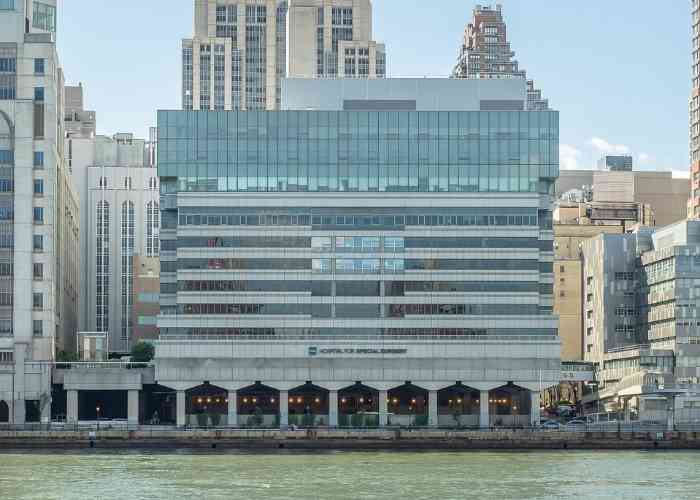Anterior Stabilization of the Shoulder: Latarjet Protocol
Progression to the next phase based on Clinical Criteria and/or Time Frames as Appropriate.
First 2 weeks after surgery
Phase I – Immediate Post-Surgical Phase (approximately Weeks 1- 2)
(1st Post Op Visit is 2 weeks after surgery)
Goals:
- Minimize shoulder pain and inflammatory response
- Protect the integrity of the surgical repair
- Achieve gradual restoration of passive range of motion (PROM)
- Enhance/ensure adequate scapular function
Precautions/Patient Education:
- No active range of motion (AROM) of the operative shoulder
- No excessive external rotation range of motion (ROM) / stretching.
- Remain in sling, only removing for showering. Shower with arm held at side
- Sleep with sling supporting operative shoulder, place a towel under the elbow to prevent shoulder hyperextension
- No lifting of objects or supporting body weight with operative shoulder
- Keep incisions clean and dry
- Patient education regarding limited use of upper extremity despite the potential lack of or minimal pain or other symptoms
- Patient education regarding posture, joint protection, positioning, hygiene, etc.
Activity:
- Arm in sling except when performing distal upper extremity exercises
- Begin restoring AROM of elbow/wrist/hand of operative extremity
- Forward flexion and elevation to tolerance
- Abduction in the plane of the scapula to tolerance
- Internal rotation (IR) to 45 degrees at 30 degrees of abduction
- External rotation (ER) in the plane of the scapula from 0-25 degrees; begin at 30-40 degrees of abduction; respect anterior capsule tissue integrity with ER range of motion; seek guidance from intraoperative measurements of external rotation ROM
- Scapular clock exercises progressed to scapular isometric exercises
- Ball squeezes
- Frequent cryotherapy for pain and inflammation
Milestones to progress to phase II:
- Appropriate healing of the surgical repair
- Adherence to the precautions and immobilization guidelines
- Achieved at least 100 degrees of passive forward elevation and 25 degrees of passive external rotation at 20 degrees abduction
- Completion of phase I activities without pain or difficulty
Phase II – Intermediate Phase/ROM (approximately Week 3-9)
Goals:
- Minimize shoulder pain and inflammatory response
- Protect the integrity of the surgical repair
- Achieve full restoration of active range of motion of elbow, wrist, and hand
- To be weaned from the sling beginning week 3
- Begin light waist level activities
Precautions:
- No active movement of shoulder till adequate PROM with good mechanics
- No lifting with affected upper extremity
- No excessive external rotation ROM / stretching
- Do not perform activities or strengthening exercises that place an excessive load on the anterior capsule of the shoulder joint (i.e. no pushups, pec flys, etc.)
- Do not perform scaption with internal rotation (empty can) during any stage of rehabilitation due to the possibility of impingement
- Continued patient education: posture, joint protection, positioning, hygiene, etc.
Early Phase II
Weeks 3-4 (2nd Post Op Visit is not until 6 weeks after surgery)
- Progress shoulder PROM (do not force any painful motion)
- Forward flexion and elevation to tolerance
- Abduction in the plane of the scapula to tolerance
- IR to 45 degrees at 30 degrees of abduction
- ER to 0-45 degrees; begin at 30-40 degrees of abduction; respect anterior capsule tissue integrity with ER range of motion; seek guidance from intraoperative measurements of external rotation ROM)
- Active assisted range of motion (AAROM) of shoulder typically begins at week 3
- Follow passive range of motion guidelines
- Progress from supine to lawn chair to standing
- Glenohumeral joint mobilizations as indicated (Grade I, II) when ROM is significantly less than expected. Mobilizations should be done in directions of limited motion and only until adequate ROM is gained.
- Address scapulothoracic and trunk mobility limitations. Scapulothoracic and thoracic spine joint mobilizations as indicated (Grade I, II, III) when ROM is significantly less than expected. Mobilizations should be done in directions of limitations and only until adequate ROM is gained.
- Begin incorporating posterior capsular stretching as indicated
- Cross body adduction stretch
- Side lying internal rotation stretch (sleeper stretch)
- Continued Cryotherapy for pain and inflammation
Late Phase II (approximately Week 6):
(2nd Post Op Visit is 6 weeks after surgery)
- Progress shoulder PROM (do not force any painful motion)
- Forward flexion, elevation, and abduction in the plane of the scapula to tolerance
- IR as tolerated at multiple angles of abduction
- ER to tolerance; progress to multiple angles of abduction once >/= 35 degrees at 0-40 degrees of abduction
- Progress from AAROM to AROM of the shoulder as tolerated with good shoulder mechanics (i.e. minimal to no scapulathoracic substitution with up to 90-110 degrees of elevation.)
- Initiate balanced AROM / strengthening program; continue to respect anterior capsule tissue integrity with ER range of motion and position
- Initially in low dynamic positions
- Nearly full elevation in the scapular plane should be achieved before beginning elevation in other planes
- All activities should be pain free and without substitution patterns
- No heavy lifting or plyometrics should be performed at this time • Gain muscular endurance with high repetition of 30-50, low resistance 1-3 lbs
- Exercises should be progressive in terms of muscle demand/intensity, shoulder elevation, and stress on the anterior joint capsule
- Strengthen scapular retractors and upward rotators
- Exercises should consist of both open and closed chain activities
- Initiate full can scapular plane raises to 90 degrees with good mechanics
- Initiate ER/IR strengthening using exercise tubing at 0º of abduction (use towel roll)
- Initiate sidelying ER with towel roll
- Initiate manual resistance ER supine in scapular plane (light resistance)
- Initiate prone rowing at 30/45/90 degrees of abduction to neutral arm position
- Begin rhythmic stabilization drills
- ER/IR in the scapular plane
- Flexion/extension and abduction/adduction at various angles of elevation
- Glenohumeral and scapulothoracic joint mobilizations as indicated (Grade I-IV as appropriate)
- Continue AROM elbow, wrist, and hand
- Continued cryotherapy for pain and inflammation
Milestones to progress to phase III:
- Passive forward elevation at least 155 degrees
- Passive external rotation within 8-10 degrees of contralateral side at 20 degrees abduction
- Passive external rotation at least 75 degrees at 90 degrees abduction
- Active forward elevation at least 145 degrees with good mechanics
- Appropriate scapular posture at rest and dynamic scapular control with ROM and functional activities
- Completion of phase II activities without pain or difficulty
Phase III – Strengthening Phase (approximately Week 10 – Week 15)
(3rd Post Op Visit is 3 months after surgery)
Goals:
- Normalize strength, endurance, neuromuscular control
- Return to chest level full functional activities
- Gradual and planned buildup of stress to anterior joint capsule
Precautions:
- Do not overstress the anterior capsule with aggressive overhead activities / strengthening
- Avoid contact sports/activities
- Do not perform strengthening or functional activities in a given plan until the patient has near full ROM and strength in that plane of movement
- Patient education regarding a gradual increase to shoulder activities
Activity:
- Continue A/PROM as needed/indicated
- Initiate biceps curls with light resistance, progress as tolerated
- Initiate gradually progressed strengthening for pectoralis major and minor; avoid positions that excessively stress the anterior capsule
- Progress subscapularis strengthening to focus on both upper and lower segments
- Push up plus (wall, counter, knees on the floor, floor)
- Cross body diagonals with resistive tubing
- IR resistive band (0-45, 90 degrees of abduction)
- Forward punch
Milestones to progress to phase IV:
- Passive forward elevation WNL
- Passive external rotation at all angles of abduction WNL
- Active forward elevation WNL with good mechanics
- Appropriate rotator cuff and scapular muscular performance for chest level activities
- Completion of phase III activities without pain or difficulty
Phase IV – Overhead Activities Phase / Return to activity phase (approximately Week 16-20) Goals:
(Final Post Op Visit is 5-6 months after surgery)
- Continue stretching and PROM as needed/indicated
- Maintain full non-painful AROM
- Return to full strenuous work activities
- Return to full recreational activities
Precautions:
- Avoid excessive anterior capsule stress
- With weight lifting, avoid triceps dips, wide grip bench press, and no military press or lat pulldowns behind the head. Be sure to “always see your elbows”
- Do not begin throwing, or overhead athletic moves until 4 months post-op or cleared by Dr. Allen MD
Activity:
- Continue all exercises listed above
- Progress isotonic strengthening if patient demonstrates no compensatory strategies, is not painful, and has no residual soreness
- Strengthening overhead if ROM and strength below 90 degree elevation is good
- Continue shoulder stretching and strengthening at least four times per week
- Progressive return to upper extremity weight lifting program emphasizing the larger, primary upper extremity muscles (deltoid, latissimus dorsi, pectoralis major)
- Start with relatively light weight and high repetitions (15-25)
- May do pushups as long as the elbows do not flex past 90 degrees
- May initiate plyometrics/interval sports program if appropriate/cleared by PT and Dr. Allen
- Can begin generalized upper extremity weight lifting with low weight, and high repetitions, being sure to follow weight lifting precautions
- May initiate pre injury level activities/vigorous sports if appropriate/cleared by Dr. Allen
Milestones to return to overhead work and sport activities:
- Clearance from Dr. Allen MD
- No complaints of pain or instability
- Adequate ROM for task completion
- Full strength and endurance of rotator cuff and scapular musculature for task completion
- Regular completion of continued home exercise program
*Please note that the instructions provided above are general guidelines to be followed; however, any written or verbal instructions provided by Dr. Allen supersede the instructions above and should be followed.






